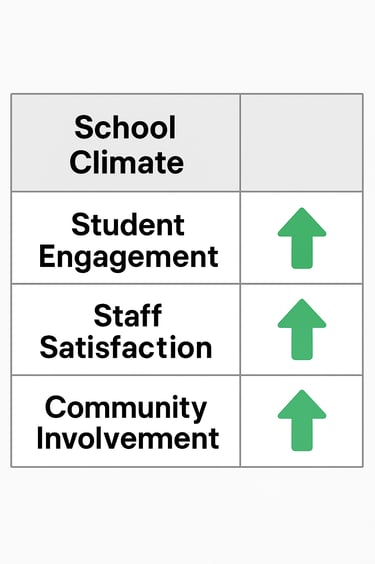Beyond the Spreadsheet: What the Data Doesn’t Show
Data can inform but it can also deceive. In this post, Dr. Marion Mouton unpacks the limitations of spreadsheets and dashboards, revealing the stories, context, and human factors that numbers alone can’t capture. True leadership requires reading between the lines to uncover what the data isn’t saying.
LEADERSHIPCOMMUNICATION
7/18/20253 min read


In schools, we’ve been trained to look at dashboards, spreadsheets, and data walls. And rightly so numbers tell part of the story. But what happens when the most meaningful insights aren’t in the cells of a spreadsheet, but in the tone of a teacher’s voice, the energy of a hallway, or the side conversations during a staff meeting?
Leadership requires us to understand both the head and the heart. It’s not just about test scores, attendance percentages, or behavior referrals. It’s about reading the room, sensing morale shifts, and listening to what’s said in between the lines.
Quick Fact
According to a 2023 report by the RAND Corporation, teacher morale and perception of school leadership have a stronger correlation to staff retention than compensation or workload. Heart data matters and it drives real outcomes.
The Unseen Indicators
No data report will tell you that your staff is burnt out. No pie chart will highlight that a student is carrying emotional weight too heavy to bear. And there is no graph that can capture the warmth of a student greeting a security officer like family. This is the realm of “heart data” qualitative insights drawn from observation, emotion, and empathy.
As leaders, we must look beyond the spreadsheet to get a complete picture.
Triangulating Heart Data and Head Data
Here are a few ways leaders can intentionally blend both:
1. Walk the Halls Daily
Not just for supervision. Listen to tones, look at faces. Take note of who is energized, who is disconnected, and who might need encouragement.
2. Use Empathy Interviews
Ask simple but powerful questions: How are you really doing? What’s been weighing on you lately? What’s one thing you wish leaders understood better?
3. Analyze Tone, Not Just Talk
In meetings and emails, tone often signals more than words. Is your staff's engagement curious or compliant? Are questions being asked to clarify or to challenge?
4. Track Morale Like a Metric
Create a simple pulse check every month where staff can anonymously share how they feel, what’s working, and where they need support.
5. Practice “Message Walkthroughs”
After you deliver a message or lead a meeting, ask a few trusted staff members: How did that land? What did people hear versus what I meant?
6. Anchor in Your Vision
At Leonard Middle School, we lead with our vision to Educate, Empower, and Equip every student and we do it with communication, clarity, and consistency. That means being transparent about our data and also being attuned to the emotional undercurrents of our community.
"Not everything that can be counted counts, and not everything that counts can be counted."
— Albert Einstein
Real World Snapshot
During my tenure leading a turnaround campus, the data showed we were on the rise. growth in scores, improved metrics, a clear upward trend. But something felt off. The energy had shifted. I started making it a point to walk the halls not just to observe instruction, but to read the emotional temperature.
One day, a trusted teacher pulled me aside and said, “Dr. Mouton, we’re moving the needle, but I’m not sure how much longer I can keep this pace.”
That moment hit hard. I had been tracking progress through spreadsheets, but I realized I was missing the people behind the progress. The data told one story, but the culture was writing another. From then on, I committed to leading with both the head and the heart.
Final Thought & Call to Action
The most effective school leaders are not just number crunchers—they are people readers. Yes, analyze the data, but also trust your gut when the building feels off. Lead with empathy. Make space for conversation. Ask the second question. When you combine head data with heart data, you create a culture where people feel seen, heard, and valued.
This week, pause before you run your next report. Walk the campus. Check the temperature, not the thermostat. And remember: leadership is a human endeavor first.
Three Reflective Leadership Questions
1. What non-verbal signals have I overlooked this week that could tell me more than a spreadsheet?
2. How do I create regular opportunities to hear the "unspoken" voices of my staff and students?
3. What systems can I implement to ensure I’m measuring both performance and wellbeing?
